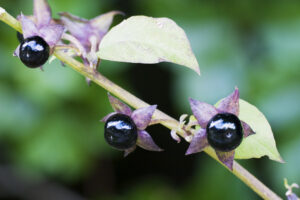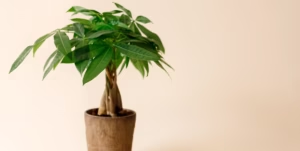Tree Planting & Transplanting: A Comprehensive Guide
Trees are an essential part of our environment. They improve air quality, provide shade, enhance property values, and contribute to overall biodiversity. When it comes to incorporating trees into a landscape or relocating them, tree planting and transplanting are two key processes that need careful planning and execution. Whether planting a new tree or relocating a mature one, both processes require specific knowledge, equipment, and expertise.
In this comprehensive guide, we’ll explore everything you need to know about tree planting and transplanting, from understanding what these processes involve, to step-by-step instructions, required equipment, costs, and top agencies that offer professional tree services in the United States.
What is Tree Planting & Transplanting?
Tree Planting
Tree planting involves placing a tree, whether a sapling or a mature specimen, into the ground. It’s an essential practice for maintaining a healthy environment, reforesting, or enhancing urban landscapes. Tree planting requires consideration of factors such as soil quality, weather conditions, and tree species to ensure successful growth.
Tree Transplanting
Tree transplanting is the process of relocating an established tree from one location to another. This may be necessary when trees are in the way of construction, need better growing conditions, or when landscaping plans change. Transplanting can be a complex and delicate task, especially with mature trees, as it requires proper planning to avoid damaging the tree’s roots, and ensure its survival in its new location.
Both planting and transplanting have their own set of challenges, and professional help is often required, particularly for large or mature trees.
The Process of Tree Planting & Transplanting
Tree Planting Process
Planting a tree may seem simple, but proper technique is crucial for the tree’s long-term health. Here is the general process:
- Choose the Right Tree: The tree species should be suitable for the climate, soil, and space available. Research the growth rate, mature size, and light requirements.
- Select the Location: Ensure the site provides sufficient space for the tree to grow and thrive. Consider the tree’s light, water, and soil needs. Avoid planting too close to buildings, power lines, or other structures.
- Prepare the Soil: Loosen the soil around the planting site to help the tree establish roots. If necessary, amend the soil with organic matter for better nutrition and drainage.
- Dig the Hole: The hole should be 2-3 times the width of the tree’s root ball but no deeper than the root ball itself. This helps roots spread more easily.
- Plant the Tree: Place the tree in the hole, ensuring it’s upright and the root flare is visible at the soil surface. Fill the hole with soil, tamping it down gently to remove air pockets.
- Water and Mulch: Water the tree deeply after planting and apply mulch around the base to conserve moisture and regulate soil temperature.
- Staking: For young trees or trees in windy areas, stake the tree to provide stability as it establishes its roots.
Tree Transplanting Process
Transplanting an established tree is more involved than planting a new one. Here’s the general process:
- Assess the Tree’s Health: Only transplant healthy trees. Unhealthy or stressed trees have a lower chance of survival after transplanting.
- Plan the Timing: The best time to transplant is during the tree’s dormant season (late fall or early spring), which reduces stress on the tree.
- Prepare the New Location: Similar to planting, prepare the new site by loosening the soil and digging an appropriate-sized hole. Make sure the conditions are suitable for the tree species.
- Dig Around the Tree: Use a spade to dig around the root system, leaving a large root ball intact. The size of the root ball depends on the size of the tree.
- Transport the Tree: Carefully lift the tree with its root ball, using burlap or canvas to wrap the roots. For large trees, professional equipment like a tree spade may be necessary.
- Replant the Tree: Place the tree in its new location, ensuring the root flare is at the soil surface. Backfill with soil, water thoroughly, and mulch the base.
- Monitor and Maintain: After transplanting, closely monitor the tree for signs of stress and ensure it receives adequate water. Continue this for several months to allow the tree to establish in its new environment.
Equipment Required for Tree Planting & Transplanting
- Spade/Shovel: For digging holes and moving soil.
- Tree Spade: For transplanting large, mature trees, a mechanical tree spade is used to dig up and relocate trees with their root ball intact.
- Burlap or Canvas: Used to wrap the root ball of the tree during transplanting.
- Watering Tools: Hoses, sprinklers, or irrigation systems for keeping the tree hydrated.
- Mulch: Organic material like bark or wood chips to retain soil moisture and regulate temperature.
- Stakes and Ties: To support young trees until they establish strong roots.
- Wheelbarrow: For transporting soil, mulch, and smaller trees.
Cost of Tree Planting & Transplanting
The cost of tree planting and transplanting depends on several factors, including tree species, size, location, and whether professional services are required. Here’s a general breakdown:
| Tree Type | Planting Cost | Transplanting Cost |
|---|---|---|
| Small Trees (6-10 feet) | $150 – $500 | $500 – $1,500 |
| Medium Trees (10-20 feet) | $500 – $1,500 | $1,500 – $3,000 |
| Large Trees (20+ feet) | $1,500 – $5,000+ | $3,000 – $10,000+ |
Factors such as soil conditions, location accessibility, and the complexity of the move can impact these costs. Urban areas, where space is limited, or trees need to be moved through narrow spaces, will generally be more expensive.
Average Cost by Top 50 U.S. Cities
The cost of planting and transplanting trees can vary significantly across different regions in the U.S. Below is a table showing average costs for tree planting in the top 10 U.S. cities:
| City | Average Planting Cost | Average Transplanting Cost |
|---|---|---|
| New York, NY | $1,500 | $3,500 |
| Los Angeles, CA | $1,200 | $3,000 |
| Chicago, IL | $1,000 | $2,500 |
| Houston, TX | $900 | $2,000 |
| Phoenix, AZ | $800 | $1,800 |
| Philadelphia, PA | $1,200 | $2,800 |
| San Antonio, TX | $700 | $1,500 |
| San Diego, CA | $1,100 | $2,700 |
| Dallas, TX | $900 | $2,000 |
| San Jose, CA | $1,300 | $3,200 |
Note: These costs are estimates and can vary depending on the tree species, size, and local conditions.
Top Tree Planting & Transplanting Agencies in the U.S.
When it comes to tree planting and transplanting, it’s important to hire professional services, especially for mature trees. Here’s a list of top agencies in the U.S. that offer expert tree planting and transplanting services:
| Agency Name | City | State | Phone Number | Website |
|---|---|---|---|---|
| Bartlett Tree Experts | Stamford | CT | 1-877-BARTLETT | www.bartlett.com |
| Davey Tree Expert Company | Kent | OH | 1-800-445-8733 | www.davey.com |
| SavATree | Bedford Hills | NY | 1-800-341-8733 | www.savatree.com |
| The Tree Doctor | San Diego | CA | 1-858-503-9780 | www.treedoctor.com |
| Rainbow Treecare | Minnetonka | MN | 952-922-3810 | www.rainbowtreecare.com |
| Monster Tree Service | Multiple Locations | Various | 1-888-744-0155 | www.whymonster.com |
| The Care of Trees | Wheeling | IL | 1-877-404-8733 | www.davey.com/thecareoftrees |
| Tree Transplant Specialists | Loveland | CO | 1-970-532-2437 | www.treetransplant.com |
| Green Tree Pros | Austin | TX | 1-888-380-6615 | www.greentreepros.com |
| Almstead Tree & Shrub Care | New Rochelle | NY | 1-914-576-0193 | www.almstead.com |
Tree planting and transplanting
Tree planting and transplanting are valuable practices that enhance landscapes and protect the environment
Whether you’re adding a new tree to your yard or relocating an existing one, proper techniques, the right equipment, and expert help can ensure the long-term health and success of your trees. Professional services, though an investment, offer the assurance of safety and care, especially for mature trees. With the right approach, you can enjoy the many benefits trees offer for years to come.
1. What is the best time of year to plant a tree?
The best time to plant trees is during their dormant season, typically in early spring or late fall. This allows the tree to establish roots before extreme weather conditions like summer heat or winter frost, giving it the best chance to grow and thrive.
2. Can any tree be transplanted?
Most trees can be transplanted, but the success of the process depends on the tree’s age, species, and health. Younger trees are easier to transplant, while mature or delicate species may require professional help and specialized equipment to minimize stress and ensure survival.
3. How deep should I plant a tree?
A tree should be planted at the same depth as it was in its previous location, with the root flare visible just above the soil. The hole should be 2-3 times wider than the root ball to allow for root expansion and proper establishment.
4. How do I prepare the soil for tree planting?
Before planting, loosen the soil around the planting area to improve drainage and root growth. You may also need to amend the soil with compost or organic matter if it lacks nutrients. The soil should be well-aerated and slightly moist, but not waterlogged.
5. Can I transplant a tree myself?
Small trees can usually be transplanted by homeowners, but for larger or mature trees, it’s best to hire professionals. Transplanting involves digging a large root ball and ensuring proper replanting techniques to minimize root damage and reduce transplant shock.
6. How do I care for a newly planted or transplanted tree?
After planting or transplanting, water the tree deeply and regularly, especially during its first year. Mulch around the base to retain moisture, but avoid piling mulch against the trunk. Monitor for stress signs like wilting and provide protection from extreme weather conditions.
7. What equipment is needed for transplanting large trees?
For large trees, specialized equipment like a mechanical tree spade is used to dig and move the tree with its root ball intact. Other essential tools include shovels, burlap, stakes, and ties. In many cases, professional arborists with proper equipment are required.
8. How much does it cost to plant a tree?
The cost of planting a tree varies depending on its size and species. Small trees can cost $150 to $500 to plant, while larger trees can range from $1,500 to $5,000 or more, especially if professional services and equipment are needed for installation.
9. What is transplant shock, and how can I prevent it?
Transplant shock occurs when a tree is stressed by the move, showing symptoms like wilting, leaf drop, or stunted growth. To minimize transplant shock, water the tree well, avoid damaging roots, and transplant during the dormant season when the tree is less active.
10. How long does it take for a transplanted tree to recover?
Recovery time for a transplanted tree depends on its size, species, and how well it was transplanted. On average, it takes one year for every inch of trunk diameter for the tree to fully establish in its new location, with proper care and watering during this period.






